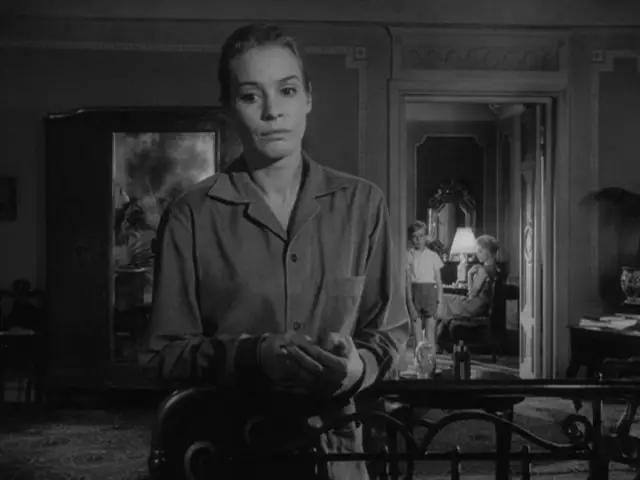
See more details, packaging, or compare
Synopsis
Two sisters—the sickly, intellectual Ester (Ingrid Thulin) and the sensual, pragmatic Anna (Gunnel Lindblom)—travel by train with Anna’s young son Johan (Jorgen Lindstrom) to a foreign country seemingly on the brink of war. Attempting to cope with their alien surroundings, the sisters resort to their personal vices while vying for Johan’s affection, and in so doing sabotage any hope for a future together. Regarded as one of the most sexually provocative films of its day, Ingmar Bergman’s The Silence offers a brilliant, disturbing vision of emotional isolation in a suffocating spiritual void.
Picture 8/10
The final film in Ingmar Bergman’s film trilogy, The Silence is presented in the aspect ratio of 1.33:1. It is available exclusively in Criterion’s A Film Trilogy by Ingmar Bergman box set. The high-definition restoration comes from a scan of a 35mm fine-grain master positive.
The Silence manages to offer the best-looking presentation in the set. It offers the sharpest looking image and it does a better job at delivering the finer details compared to the other films, even in the long shots, which helps with the depth in a number of scenes. The picture can be a bit dark but shadow detail is still strong, and the blacks look solid.
There are still a few minor specs of dust, and there are some fluctuations that pop up, but of the three films in the set this looks to be in the best shape. It’s a good looking image, even all these years later.




















Audio 6/10
Criterion includes two Dolby Digital 1.0 mono tracks: one for the original Swedish soundtrack and another for the English-dub. The Swedish track can be a bit flat but it has been cleaned up and there is some depth to be found. The English track is edgier and has a more prominent background hiss. The Swedish one is the way to go.
Extras 4/10
Criterion’s box set for Bergman’s film trilogy is unfortunately scant on features, each film getting a handful. Each disc offers an interview with Peter Cowie talking about the respective film of that disc. In the 11-minute one found here he gets into the film’s controversies and the various cuts made to the it around the world (though incredibly it played in the U.S. with very few cuts), as well as how these controversies led to a solid box office take. Cowie also explains how the film differs technically compared to all of Bergman’s film up to that point, singling out a few different moments.
The DVD also features a small poster gallery, showing off a handful of posters for the films (more for The Silence, which has a couple of really good ones), and then the U.S. theatrical trailer. An insert is also included, featuring and essay by Leo Braudy.
Though it was nice getting the poster gallery (which, despite being small, was a great inclusion) the supplements still leave a lot to be desired.
Closing
The supplements still disappoint but the film’s presentation is still solid all these years later and it’s the best looking one in the set.







